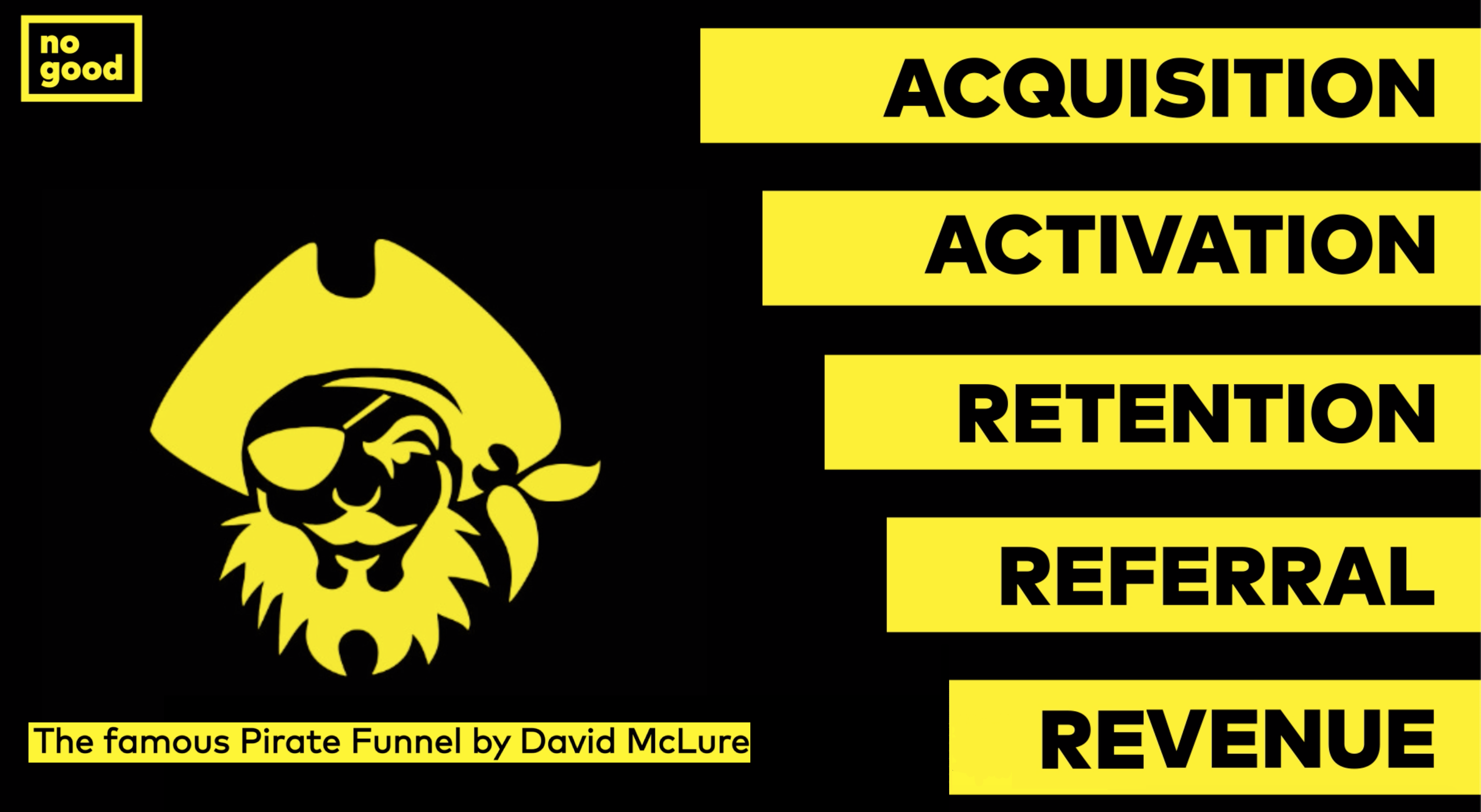Growth marketing or the growth hacking process is not magic or sorcery of clever hacks and shortcuts. As one of the top growth marketing agencies, we often have lengthy conversations with potential clients on the growth hacking process. We keep getting asked the same questions. What are the best growth tricks? How quickly will my company grow with hacks? Can we minimize the budget and find shortcuts to growth? Every company wants to grow quickly and wants to know how they can go from standing still to climbing a mountain. Unfortunately, clever hacks and shortcuts can only get you so far when you are trying to create repeatable sustained growth.
Growth marketing is a clear outcome-oriented step by step method. This includes understanding product-market fit, full-funnel strategy, rapid experimentation, optimization, analytics, and many other practices. Now understanding the growth hacking process is one thing, but next, you’ll need to either hire or find a team of exceptional growth marketers who can execute this growth marketing framework for you. Unlike traditional marketing, which usually works in siloes, growth marketing requires collaboration across many different areas in the company. This means growth hacking is ultimately a cross-road of product teams, marketing teams, development teams, and creative teams, all in one.
In this guide, we will cover how to build a world-class growth marketing team and establish an efficient collaborative framework for rapid and sustainable growth.
Building Your Growth Team
The first and most important step
Your team will feature players of varying skill sets that all work together push toward the common goals. The make up of a team may vary from place to place and project to project but these core areas create a strong foundation.

1. Growth Lead / VP of Growth Marketing
The Head of Growth Marketing sets the overall strategy for the team and ensures that all growth activities relate to that strategy.
- This person knows how to make a sound hypothesis and use data in the pursuit of determining the most efficient and economical path to growth.
- Their primary objectives are identifying the most impactful variables around acquisition, retention, engagement and monetization and then putting them into action.
- The Head of Growth Marketing has an entrepreneurial mindset, is an effective communicator and has to be a gritty go-getter that will roll up their sleeves, get in the trenches and lead the team by example.
- Driven by curiosity, data and creativity to solve any issues that come up.
- Has excellent command of multiple marketing channels (SEO, content marketing, paid social and search, referral and affiliate marketing)
- Failure is not only an option for the Head of Growth Marketing but encouraged as each failed experiment or misstep will bring new learnings and put you and your team on the right path to success.
2. Full-Stack Developer
The primary goal of the full-stack developer is to provide the team with the assets and resources needed to execute the strategy set by the Head of Growth Marketing.
- Comfortable working in multiple coding languages and design platforms.
- Faster and more efficient in producing deliverables than using external resources.
- Sometimes broken into two roles UX-designer and developer depending on the company and/or project.
3. Growth/Performance Marketer
The growth hacker is your “big ideas” person and works in conjunction with the Head of Growth Marketing to develop the team’s strategy and growth tactics.
- An ideal growth hacker is both visionary and strategic.
- Prioritizes experiments, asses their impact, and optimizes the experiments to make sure they relate to the overall strategy and goals.
4. Content Marketer
The content marketer is the voice of the growth team and storyteller focusing on ideating and executing different pieces of content that are central to the overall strategy.
- Involved in creating blog posts, emails, social media posts, copywriting, video, and audio elements.
- Makes sure that messaging is consistent across all platforms and relates back to the overall goals.
- Creativity and knowledge of best practices of how to break through the clutter on each platform is key.
5. Growth Operations and Data Analytics:
A hugely important role that shouldn’t be overlooked, this is the numbers person and the one who is monitoring performance and how it’s delivering against objectives, goals, and strategy.
- This person understands the objectives and is consistently providing updates to the rest of the team on performance and potential areas for optimization.
- Strong data analytics and project management skills are essential as this is the person with the ultimate responsibility for tracking performance and ensuring maximum return on marketing spend.
Evaluate your current team and see how many of those roles are covered, assess if current team members can take on more responsibility or transition to underserved areas and if not, go out and hire, hire, hire! Here are essential qualities you should look for when hiring a growth marketer.
Growth Marketing Frameworks
Now that you know how your team should be assembled it’s important to shift focus to the overall guiding principles and frameworks before getting to the tactics.
A growth team needs to relentlessly pursue two things:
- Identifying the most impactful variables or levers around acquisition, retention, and monetization.
- Understand the user or buyer persona behavioral psychology, and psychographics behind those variables.
As Sean Ellis and Morgan Brown write in their book Hacking Growth:
“By breaking down the traditional business silos and assembling cross-functional, collaborative teams that bring together staff with expertise in analytics, engineering, product management, and marketing, growth hacking allows companies to efficiently marry powerful data analysis and technical know-how with marketing savvy, to quickly devise more promising ways to fuel growth”
As noted above, there is no secret or magic trick that leads a brand to achieve hyper growth. Brands only achieve that kind of growth when they develop a solid framework for growth marketing.
By establishing a framework you:
- Establish a rhythm and allow your team to efficiently execute and evaluate experiments.
- The more experiments you run the more data you can collect to inform decisions and optimize for best results.
- The growth process is designed to be a positive feedback loop that finds small wins and optimizations across the business and then compound those over time as fast as possible.

The following frameworks, in addition to having an awesome product, are what we at NoGood build our plans around.
Rapid Experimentation:
- The process of testing and validating assumptions quickly by relying on data as your primary evidence.
- This allows for multiple different tests and tactics to be used, with small budgets, to gather data to inform long-term decisions.
Full Funnel Growth Marketing:
- Breaking down the consumer journey into a step by step process that allows for efficient tracking and data collection at each stop.
- This framework can help show if consumers are getting stuck in one part of the funnel and optimizations can be made to keep things flowing.
- Your funnel should typically end with a key business goal whether it’s a purchase or product sign up.

7-Step Process
So you have built your team and decided on a framework, now we get to the tactics and start experimenting!
- Define “North Star” metric
- Brainstorming & Ideation
- Filter and Prioritize
- Test
- Analyze
- Scale-rinse, repeat, work work work
- Document
-
Define “North Star” metric
- The “North Star” metric or OMTM (one metric that matters) is the single metric that represents the health of your business.
- It also captures the core value that your product delivers to customers and emphasizes that of all the data that is collected during the process, you know that this specific one is the key.
- Optimizing your efforts to grow this metric is key to driving sustainable growth across your full customer base.
- To define your North Star metric you must understand the value your most loyal customers get from using your product, the parameters it has to your business health and then you should try to quantify this value in a single metric.
Once you understand your North Star Metric, it’s important to understand and track the variables that work together to move this metric.
Examples:
Facebook’s North Star Metric is Daily Active Users. It helps them focus on both acquiring new users and most importantly retaining and engaging existing ones.
Airbnb’s North Star Metric is nights booked. This captures value delivered to both guests and hosts.
Spotify’s North Start Metric is time spent listening. This measures the value customers are getting from the service.
-
Brainstorming & Ideation
- Brainstorm all of the possible, levers, channels and tactics to move acquisition, retention or monetization metrics.
- This process should involve all team members and be compiled using a platform like Basecamp, Trello or even a simple Google sheet to allow for maximum participation, shareability and feedback.
- Best practices and previous use cases can come into play during the brainstorm as should research into what competitors are doing in the marketplace.
-
Filter and Prioritize
Now, it’s time to decide which ideas you’ll focus on and test.
Important question to ask with each idea:
- What is the potential impact and probability of success (high, medium or low) with this idea?
- What resources (time, design, development, teams) are needed to execute the idea?
- These discussions should always be held with the overall strategy and North Star metric in mind and look at the potential for sustained impact vs one-hit wonders.
- Ideas can be rated on scale of 1-10 in terms of potential impact, cost, resources and then filtered, sorted and averaged to find the most efficient ideas to begin testing.
-
Hypothesize and test
First and foremost your hypothesis should read like:
If successful, [variable] will increase by [impact], because [assumptions].
- Turn the hypothesis into an MVP (minimal viable product), short-or-long term campaign, or landing page.
- A statistically/logically significant pilot to see if this hack, experiment channel, or tactic is right for you or not.
- Execute your experiments within the minimal viable effort needed until you reach statistical significance or high probability that something is working, and measure daily or weekly results.
- Make sure to educate yourself and justify your assumptions with previous experiments, case studies and success stories, asking other growth teams, reading to channel experts and those who have done it before.
-
Analyze
Here are a few questions to help you analyze your experiment:
- What was the impact of this experiment relating to the North Star Metric?
- What was the impact of this experiment relating to resources?
- How accurate were your predictions?
- Why did you see the results you saw?
- Were there any surprises?
Answers to these questions and other findings should be documented as a resource for future campaigns. You can also return to the brainstorming document and compare how your ratings from before the experiment compare to your ratings after the experiment in regards to impact and resources used. This will help you decide whether your experiments and hypothesis were accurate.
-
Scale, rinse and repeat.

Scale up the successful campaigns, scale down the unsuccessful ones and rinse and repeat over the course of the campaign.
-
Document successes and failures and build your own playbook.
- Document everything from your tests in an easy, searchable and understandable way.
- Consolidate all data and learnings into one document that shows what worked, what didn’t work and an overall summary and explanation of why.
- Note each step, change and optimization made at each level for a full accounting on each experiment and easy to understand reference document.
- Carefully label each success and failure so you know what worked and to use again and what didn’t and to leave behind.
So there you have it. You’ve learned about the team, some frameworks, and the steps needed to get your growth process started. An important thing to remember is that while we believe in this framework and the overall message, each situation is unique. Maybe you need three designers, a performance marketer, and no content marketers, or maybe you’ll need a full-stack developer and a data analyst. It all depends on the growth problem you’re trying to solve. But this is what makes the growth hacking process so great! It’s an agile and flexible method that can move mountains for companies. Some of the biggest brands in the world such as Facebook, Uber, Airbnb, to name just a few, all started their rapid growth through the growth hacking process. What we believe is that these are the basics needed and that with this framework as a foundation it should be easy to make changes and optimize for what suits your business best.
Do you want to create sustainable growth for your company? Send us a message!
We’re a squad of the best growth marketers in the world, and we’re ready to help your business take the next step in growth.







Now this is what I call a guide! Growth marketing is often hard to explain to people, but this is certainly the best guide I’ve seen online so far.